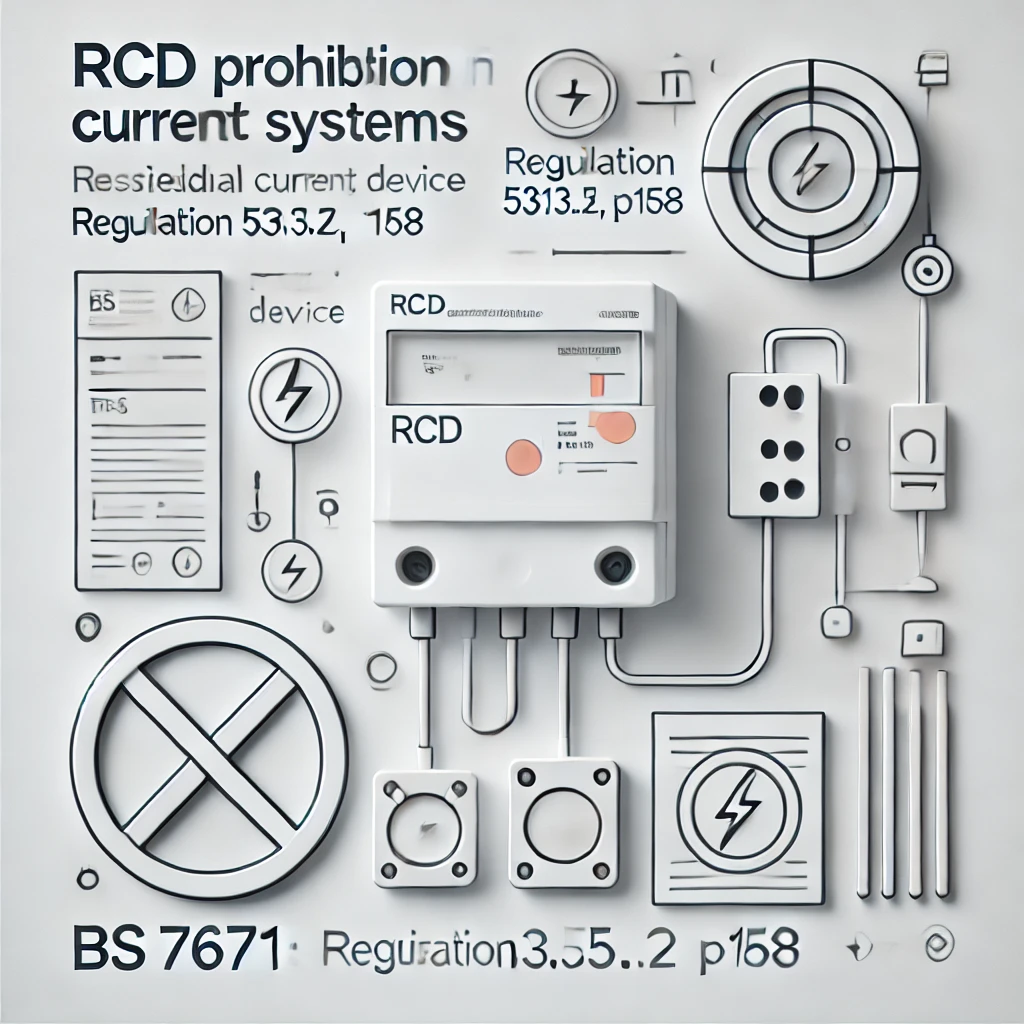RCD Prohibition in TN-C Systems
An RCD shall NOT be used in a TN-C system. This regulation is detailed in BS 7671:2018, Regulation 531.3.5.2, P158, and is crucial for maintaining system safety and preventing nuisance tripping.

OW London Electrician and Home Automation Engineers Team
RCD Prohibition in TN-C Systems
Understanding Regulation 531.3.5.2, P158
According to BS 7671:2018, Regulation 531.3.5.2, P158, an RCD (Residual Current Device) shall NOT be used in a TN-C system. This regulation addresses the critical safety concerns associated with the combined protective earth and neutral (PEN) conductor used in TN-C systems.
Why Can't RCDs Be Used in TN-C Systems?
In a TN-C system, the PEN conductor is responsible for both protective and neutral functions. This dual role can lead to complications for RCDs, which may not effectively differentiate between fault currents and normal load currents. Such ambiguity can cause nuisance tripping, which disrupts the system unnecessarily. More importantly, it can compromise safety by causing the disconnection of the neutral conductor, which is essential for the system's proper functioning.
Importance of RCDs in Other Systems
While RCDs are prohibited in TN-C systems, they play a vital role in enhancing safety in TN-S, TT, and IT systems. In TN-S and TT systems, RCDs are typically used to provide additional protection for final circuits or socket outlets. In IT systems, RCDs may be used to protect portable equipment or to improve the safety of a system with a high earth fault loop impedance.
Frequently Asked Questions
Q: Why can't an RCD be used in a TN-C system?
A: In a TN-C system, the combined protective earth and neutral (PEN) conductor is used for both protective and neutral functions, which can cause issues with RCDs. RCDs may not distinguish between fault currents and normal load currents, leading to nuisance tripping and potential safety compromises.
Q: Where are RCDs commonly used?
A: RCDs are commonly used in TN-S, TT, and IT systems to provide additional protection against electric shock. They are typically used in TN-S and TT systems for final circuits or socket outlets and in IT systems for portable equipment or to improve system safety.

Ensuring Electrical Safety with Proper RCD Use
Understanding and adhering to the regulations set forth in BS 7671:2018 is crucial for maintaining electrical safety. By following these guidelines, electricians can ensure that RCDs are used appropriately, enhancing protection without compromising system integrity.
Importance of Compliance
- Enhancing Safety: Ensuring the correct use of RCDs in appropriate systems significantly reduces the risk of electric shock and enhances overall safety.
- Preventing Nuisance Tripping: Avoiding the use of RCDs in TN-C systems prevents unnecessary system disruptions, maintaining reliable and stable electrical operations.
Adhering to these regulations is not just about compliance but also about ensuring the highest safety standards in electrical installations.
Frequently Asked Questions
Q: What happens if an RCD is used in a TN-C system?
A: Using an RCD in a TN-C system can lead to nuisance tripping and potentially dangerous situations due to the inability of the RCD to distinguish between fault currents and normal load currents.
Q: Can RCDs be used in any type of electrical system?
A: No, RCDs should not be used in TN-C systems. They are, however, commonly used in TN-S, TT, and IT systems for additional protection against electric shock.
Ensuring that RCDs are used correctly according to BS 7671:2018 is essential for electrical safety and system reliability. Stay informed and compliant to protect both installations and users.
What users Saying
Discover what our customers think about our services. Their feedback reflects our commitment to delivering exceptional service and expert solutions for all electrical and security needs.

